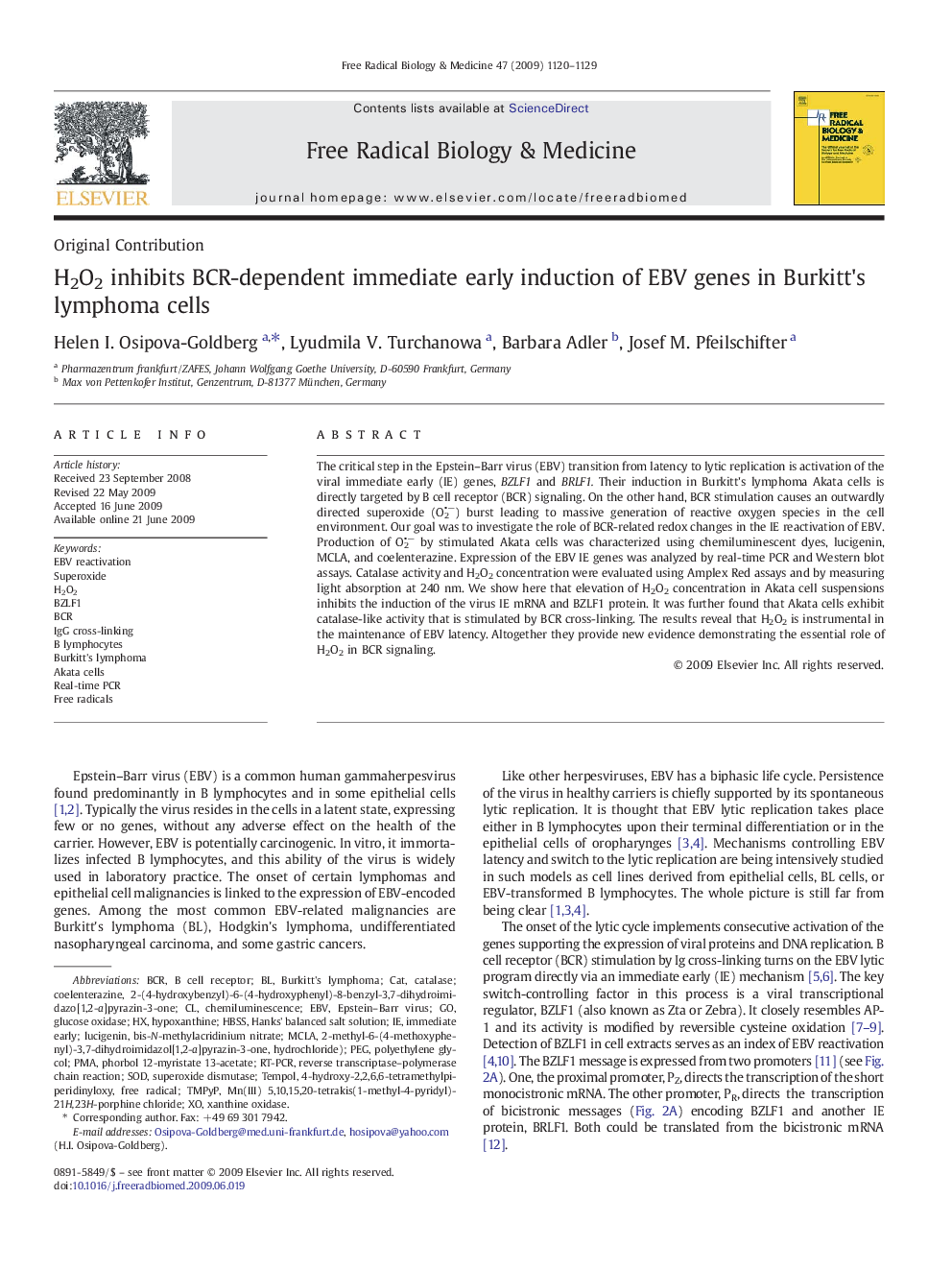| Article ID | Journal | Published Year | Pages | File Type |
|---|---|---|---|---|
| 1910144 | Free Radical Biology and Medicine | 2009 | 10 Pages |
The critical step in the Epstein–Barr virus (EBV) transition from latency to lytic replication is activation of the viral immediate early (IE) genes, BZLF1 and BRLF1. Their induction in Burkitt's lymphoma Akata cells is directly targeted by B cell receptor (BCR) signaling. On the other hand, BCR stimulation causes an outwardly directed superoxide (O2•−) burst leading to massive generation of reactive oxygen species in the cell environment. Our goal was to investigate the role of BCR-related redox changes in the IE reactivation of EBV. Production of O2•− by stimulated Akata cells was characterized using chemiluminescent dyes, lucigenin, MCLA, and coelenterazine. Expression of the EBV IE genes was analyzed by real-time PCR and Western blot assays. Catalase activity and H2O2 concentration were evaluated using Amplex Red assays and by measuring light absorption at 240 nm. We show here that elevation of H2O2 concentration in Akata cell suspensions inhibits the induction of the virus IE mRNA and BZLF1 protein. It was further found that Akata cells exhibit catalase-like activity that is stimulated by BCR cross-linking. The results reveal that H2O2 is instrumental in the maintenance of EBV latency. Altogether they provide new evidence demonstrating the essential role of H2O2 in BCR signaling.
